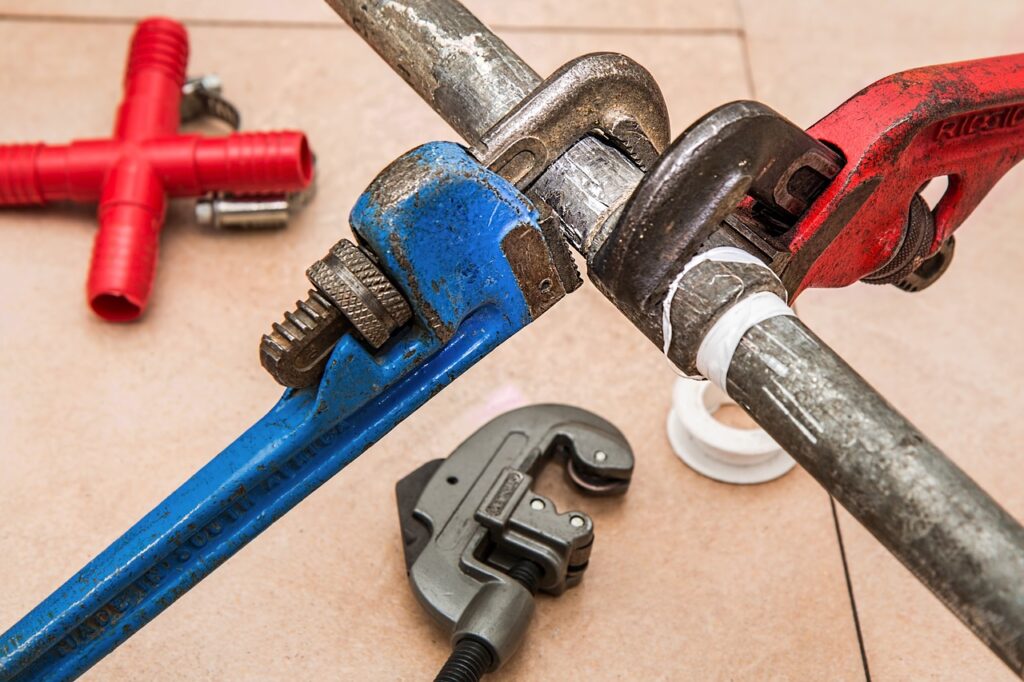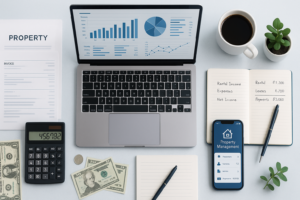
Maintaining and repairing your rental property can quickly add up as a landlord, affecting your profit margins. However, understanding effective property maintenance strategies is vital for success in this role.
It is essential to balance the need for upkeep with financial responsibility to ensure a consistent rental income. While repairs are inevitable, finding the right balance between cost-effectiveness and maintaining the quality of the property is a valuable skill for property owners.
This article provides a comprehensive guide on insightful ways for property managers to reduce maintenance expenses while preserving the value of their investments.
10 Ways for Property Managers to Reduce Maintenance Costs
1. Regular Inspections and Preventive Maintenance
Regular inspections and preventive maintenance are crucial for identifying potential issues before they escalate, saving property managers time and money. By implementing a proactive approach to maintenance, property managers can prevent costly repairs and ensure the longevity of their assets.

Scheduling regular maintenance checks for HVAC systems can help detect minor issues such as clogged filters, refrigerant leaks, or faulty electrical connections before they turn into significant problems.
This proactive approach not only improves the property’s overall performance but also ensures a pleasant and trouble-free experience for tenants and occupants while avoiding expensive replacements and reducing downtime.
2. Energy-Efficient Upgrades
Investing in energy-efficient upgrades reduces utility bills and minimizes the need for frequent repairs. Simple changes like installing LED lighting or programmable thermostats can significantly lower energy consumption.
By reducing energy usage, you are helping the environment by decreasing your carbon footprint and contributing to long-term savings on the property’s operating costs. This leads to a win-win situation where you benefit financially while positively impacting sustainability.
3. Vendor Negotiation and Bulk Purchases
Property managers can significantly impact their property’s bottom line by actively using cost-saving strategies. One effective approach is to negotiate with vendors to secure better maintenance service rates or explore the benefits of bulk purchasing.
By fostering enduring partnerships with suppliers, property managers open up opportunities for obtaining discounts on various materials and services.
For example, entering into a long-term contract agreement with a landscaping company can ensure consistent services and result in considerable cost savings over time when compared to sporadic or one-time services. This proactive approach enhances property management’s efficiency and contributes to long-term financial stability and success.
4. Tenant Education on Maintenance Responsibilities
Educating tenants about essential maintenance responsibilities is a proactive approach that can prevent minor issues from escalating into costly repairs.
Tenants can play a significant role in maintaining the property by following straightforward guidelines, such as regularly changing air filters for optimal air quality and promptly reporting leaks to prevent water damage. Additionally, ensuring cleanliness is upheld contributes to the property’s aesthetic appeal and enhances its overall functionality.
This collaborative effort contributes to a well-maintained property but also aids in reducing the workload and expenses for property managers, fostering a harmonious and efficient rental environment for all parties involved.
5. Technology Integration for Maintenance Tracking
The implementation of technology for maintenance tracking significantly streamlines the process, allowing property managers to identify patterns and trends proactively. This facilitates better planning and budgeting for maintenance costs, ensuring optimal property upkeep.
Using advanced property management software or user-friendly apps, property managers can automate maintenance requests, schedule routine check-ups, and effortlessly maintain a comprehensive digital log of all repairs. These digital tools streamline operations and reduce administrative costs, enhancing overall operational efficiency and effectiveness.
6. DIY Repairs for Minor Issues
Encouraging property managers and maintenance staff to handle minor repairs in-house can lead to significant savings on outsourcing costs. Staff members can confidently tackle tasks such as fixing leaky faucets, performing minor painting touch-ups, or replacing door handles by providing proper training and resources.
This approach reduces reliance on external contractors and fosters a sense of ownership and pride among the team, ultimately leading to enhanced efficiency and long-term cost savings.
7. Long-Term Planning and Budgeting
Property managers must develop a comprehensive long-term maintenance plan and create a well-structured budget for it. Property managers can strategically allocate funds for upcoming repairs and replacements by proactively forecasting and managing expenses, safeguarding against unexpected financial burdens.

8. Regular Training for Maintenance Staff
Investing in ongoing and regular training programs for maintenance staff is crucial to keep them well-informed about the field’s most recent techniques and technologies.
By providing continuous training, staff members can enhance their skills, enabling them to identify maintenance issues more efficiently, carry out repairs precisely, and reduce the likelihood of errors that could lead to unnecessary costs.
For instance, training sessions focused on new equipment or safety procedures help prevent workplace accidents and mitigate potential expenses associated with them in the future.
9. Sustainable Landscaping Practices
Implementing sustainable landscaping practices benefits the environment and reduces maintenance costs. By selecting native plants that are drought-resistant and low-maintenance, you can create a vibrant landscape that thrives with minimal care.
Installing efficient irrigation systems, such as drip irrigation or rainwater harvesting, ensures water is used wisely.
Additionally, using organic fertilizers and compost enriches the soil naturally, promoting healthier plant growth and biodiversity. These eco-friendly approaches contribute to a greener property, help conserve resources, and preserve the ecosystem for future generations.
10. Establishing Emergency Funds
Creating an emergency fund designated explicitly for unforeseen maintenance issues is vital for property managers to maintain financial flexibility. By establishing this reserve, property managers can promptly address urgent repairs without causing any disruptions to the property’s overall budget.
Whether it involves a sudden plumbing emergency or unexpected roof damage due to severe weather conditions, having funds aside ensures that critical maintenance needs can be met promptly and efficiently, preventing delays in addressing essential property upkeep.
Final Words
Property managers can navigate the delicate balance between upkeep and cost-effectiveness by adopting proactive strategies. Regular inspections, energy-efficient upgrades, vendor negotiations, and tenant education play pivotal roles. Integrating technology for maintenance tracking, promoting DIY repairs for minor issues, and investing in staff training contribute to long-term savings.
Sustainable landscaping practices and the establishment of emergency funds further fortify financial stability. By embracing these measures, property managers can minimize maintenance costs and ensure the sustained value and efficiency of their rental investments, fostering a harmonious and cost-effective rental environment for both landlords and tenants.





